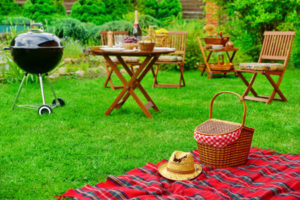
Broadleaf Weed Control with TRIMEC Liquid Herbicide – Because of the coolish weather so far this spring, we’ve seen lots of broadleaf weeds (particularly dandelions and clover) on lawns that haven’t been treated with TRIMEC liquid herbicide either last fall or earlier this spring. Now, and until the weather turns much warmer with the onset of summer, is perfect weather for getting rid of all the broadleaf weeds in your lawns. One treatment with TRIMEC liquid herbicide will do the trick. If there are lots of weeds in your lawn, treat the whole lawn; if you’ve only got a few patches, spot treat. In all cases, only use TRIMEC when the air temperature is below 85 degrees at time of application, when rain is not forecast, and when the lawn has not been/will not be cut for 24 hours.
Mowing Lawns in the Summer – We’re still in the rapid growth phase of spring lawn growing season, especially as turfgrasses produce a profuse amount of seed heads. Overnight temperatures are consistently dropping into the 50s; we have ample rains, and lawns are really growing fast. They should be mowed at least every 5-7 days, and mowing height should be 3-3 ½”. As the weather warms and growing conditions for our cool season grasses become less favorable, raise mower decks to 4-4 ½”, and decrease mowing frequency to every 7-10 days. Cool season grasses will not produce roots in warm soil, no matter whether or not the lawns are irrigated, so to reduce summer stress, we want more grass blade length to shade and protect the vulnerable crowns of the grass plants.
Fertilizing Lawns in June – Because lawns have been growing vigorously for about 3 months now, the fertilizer you applied in March-April has been pretty well used up. They are exhausted, especially after an extended period of seed head production in May. In order to promote new tillers as the old ones die back, feed it now, in June, with a slow-release, organic-based fertilizer. The additional nutrients at this time of year will also aid in the recovery of any low-fertility diseases (red thread, dollar spot) we encounter as we transition into summer.
Yellow Nutsedge Control in Lawns and Beds – Yellow Nutsedge is a yellowish-green, fast-growing, shallow-rooted grassy weed (actually it’s a sedge, not a grass), that thrives in warm weather, particularly in moist areas of lawns and well irrigated, well mulched beds. If not controlled (either by pulling it out early or spraying it), nutsedge will aggressively spread throughout the lawn/beds. Nutsedge starts growing in mid to late May and continues all summer. The best way to control/remove nutsedge from lawns and beds is to spray (spot spray) with PROSEDGE or SEDGE ENDER herbicide as early after its emergence. We recommend that you keep a DEDICATED SPRAYER on hand, filled with the herbicide, and every week or so spray areas of nutsedge that have emerged since the last spraying. If you’ll commit to this type of a program, you’ll greatly reduce your nutsedge problem; if not, you may lose control. Start early and continue as long as new shoots sprout.
Preventative Grub Control with Granular MALLET Insecticide – Grubs are the larval stage of many flying adult beetles, most significantly Japanese beetles for our purposes. While the adults, which emerge from grassy areas in late June and feed on the leaves of desirable trees, shrubs and roses for roughly 6 weeks, are annoying and disfigure many of the plants they feed on, they seldom kill plants. Grubs, on the other hand, feed on grass roots in the late summer through mid-fall (mid-August through October and then again, the following spring (April and May). Grubs can devastate whole lawns or significant parts thereof if left uncontrolled. And since the feeding is done underground and therefore unnoticed, the first sign of damage is dying turf, and then it’s too late. The safest, best way to make sure you’ll have no grub problems is to treat the lawn every spring (mid-May through mid-July) with granular MALLET/MERIT insecticide (sold either in combination with slow-release fertilizer or alone). This entirely safe (for children, pets, and/or wildlife), season-long product should be applied to all high-quality lawns every year.
Controlling Fleas, Ticks and other unwanted Pests – Fleas, ticks, ants and other unwanted pests can really spoil our backyard fun. One treatment of BioAdvanced Complete Insect Killer (available in granules or hose end sprayer) will keep your yard free of these nasty pests for up to 3 months. Treat now and rest easy knowing that you and your family are protected. I know I will.
Post-Emergent Crabgrass Control – For those of you who didn’t apply DIMENSION Pre-emergent crabgrass control in April or May and notice areas of crabgrass spreading through sunny sections of your lawns in June and July, or if you notice crabgrass breakthrough along driveways and curbs, The Lawn Depot sells a very effective liquid POST-EMERGENCE CRABGRASS CONTROL spray that can be used as either a spot spray or for general, whole-lawn use. It’s easy to use and very effective.
